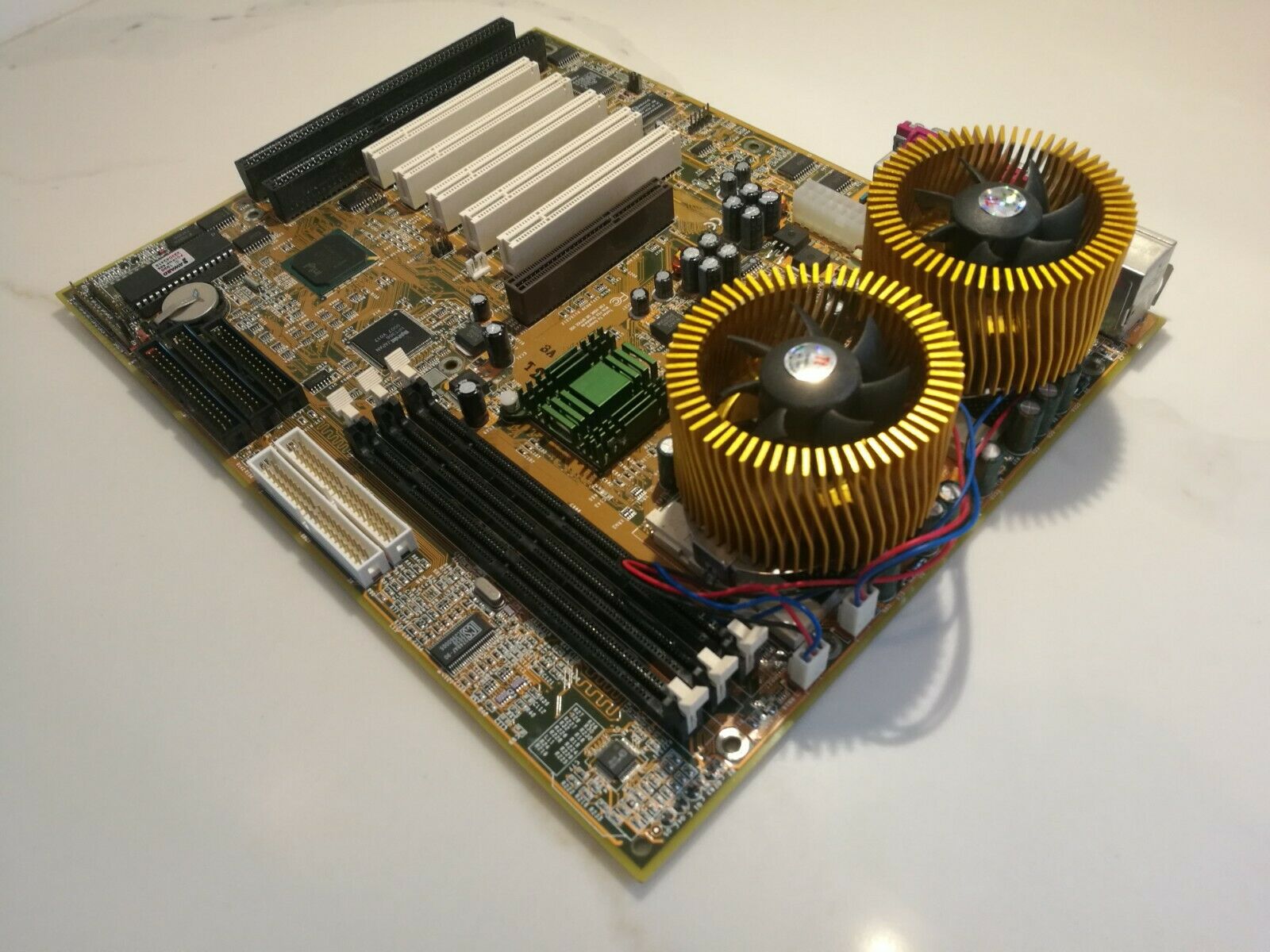ABIT BP6 on:
[Wikipedia]
[Google]
[Amazon]

 The ABIT BP6 was an
The ABIT BP6 was an
 The ABIT BP6 was an
The ABIT BP6 was an ATX
ATX (Advanced Technology eXtended) is a motherboard and power supply configuration specification developed by Intel in 1995 to improve on previous de facto standards like the AT design. It was the first major change in desktop computer enclo ...
motherboard
A motherboard (also called mainboard, main circuit board, mb, mboard, backplane board, base board, system board, logic board (only in Apple computers) or mobo) is the main printed circuit board (PCB) in general-purpose computers and other expand ...
released by ABIT in 1999. It was the first motherboard
A motherboard (also called mainboard, main circuit board, mb, mboard, backplane board, base board, system board, logic board (only in Apple computers) or mobo) is the main printed circuit board (PCB) in general-purpose computers and other expand ...
to allow the use of two unmodified Intel Celeron
Celeron is Intel's brand name for low-end IA-32 and x86-64 computer microprocessor models targeted at low-cost personal computers.
Celeron processors are compatible with IA-32
IA-32 (short for "Intel Architecture, 32-bit", commonly called ...
processors in dual Symmetric multiprocessing
Symmetric multiprocessing or shared-memory multiprocessing (SMP) involves a multiprocessor computer hardware and software architecture where two or more identical processors are connected to a single, shared main memory, have full access to all ...
(SMP) configuration. This combined with its overclocking
In computing, overclocking is the practice of increasing the clock rate of a computer to exceed that certified by the manufacturer. Commonly, operating voltage is also increased to maintain a component's operational stability at accelerated spe ...
capabilities made it a popular option among computer enthusiasts. The BP6 has been credited as the product that made multi-processor systems affordable for mainstream users, as prior the expense of any multi-processor configuration made it a feature only to be considered for workstation-class systems.
The BP6 was based on the Intel Seattle 440BX chipset, consisting of the 82443BX Northbridge and the 82371AB Southbridge.
Processors that were supported by the BP6 in SMP configuration were the PPGA Socket 370
Socket 370 (also known as the PGA370 socket) is a CPU socket first used by Intel for Pentium III and Celeron processors to first complement and later replace the older Slot 1 CPU interface on personal computers. The "370" refers to the number of ...
Celeron
Celeron is Intel's brand name for low-end IA-32 and x86-64 computer microprocessor models targeted at low-cost personal computers.
Celeron processors are compatible with IA-32
IA-32 (short for "Intel Architecture, 32-bit", commonly called ...
processors (300–533 MHz). Later Pentium III
The Pentium III (marketed as Intel Pentium III Processor, informally PIII or P3) brand refers to Intel's 32-bit x86 desktop and mobile CPUs based on the sixth-generation P6 microarchitecture introduced on February 28, 1999. The brand's initial p ...
and Celeron Coppermine models could also operate on the BP6, albeit only in single processor configuration with the use of aftermarket socket adaptors. Intel never intended the Celeron to be able to operate in SMP, and later-generation Celeron processors had their SMP interface disabled, restricting the feature to the higher-end Pentium III
The Pentium III (marketed as Intel Pentium III Processor, informally PIII or P3) brand refers to Intel's 32-bit x86 desktop and mobile CPUs based on the sixth-generation P6 microarchitecture introduced on February 28, 1999. The brand's initial p ...
and Xeon
Xeon ( ) is a brand of x86 microprocessors designed, manufactured, and marketed by Intel, targeted at the non-consumer workstation, server, and embedded system markets. It was introduced in June 1998. Xeon processors are based on the same arc ...
product lines.
The motherboard also featured two extra HDD ports, one with the HPT366 Ultra DMA/66 adapter fitted on the mainboard itself. This allowed up to eight IDE compatible drives to operate at the interface's maximum speed.
The motherboard featured ''ABIT SoftMenu'' BIOS
In computing, BIOS (, ; Basic Input/Output System, also known as the System BIOS, ROM BIOS, BIOS ROM or PC BIOS) is firmware used to provide runtime services for operating systems and programs and to perform hardware initialization during the ...
extension which allowed for jumper
Jumper or Jumpers may refer to:
Clothing
*Jumper (sweater), a long-sleeve article of clothing; also called a top, pullover, or sweater
**A waist-length top garment of dense wool, part of the Royal Navy uniform and the uniform of the United State ...
-less adjustment of system parameters such as system bus speed, CPU & AGP bridge multipliers, voltages from inside the BIOS and PC-99 coloring.
The BP6, and many other of ABIT's motherboards produced between 1999 and 2005, were victims of the capacitor plague.
References
External links
* {{YouTube, SNdHuFxowwk, title=Repair and capacitor replacement of an ABIT BP6 by Tech Tangents Computer-related introductions in 1999 Motherboard Parallel computing